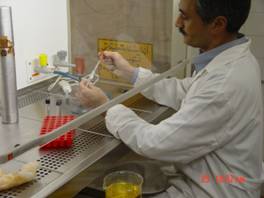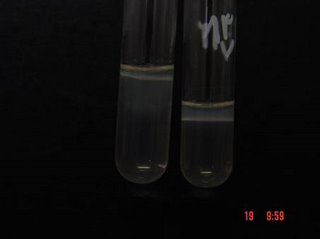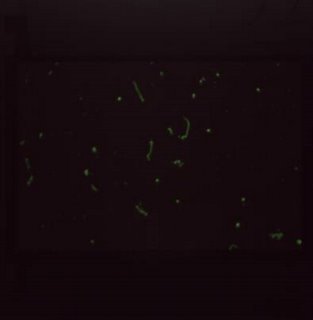
What is Leptospirosis?
Leptospirosis is an infectious disease caused by pathogenic bacteria called leptospires, that are transmitted directly or indirectly from animals to humans. It is therefore a zoonosis. It's clinical manifestations are so variable that infection can not be detected or proved reliably only on the basis of symptoms. Therefore, diagnosis can only be established by demonstration of the etiological agent or by serological procedures.
In Iran, the earliest recognised report of leptospirosis is published by Rafyi and Magami in 1968.
Like to know more about Leptospirosis clik here
In Arabic Language العربي
In Farsi Language فارسي
Leptospira research laboratory in Iran has been officially opened in 1999, by funding of Tehran University and the help of WHO/FAO Collaborating Center for Reference & Research on Leptospirosis, and Professor W. A. Ellis. Since then many research projects covering different aspects of Leptospirosis have been carried out in this Laboratory.
The main prospect of this laboratory is to investigate the current situation of leptospirosis in Iran and provide materials such as specific culture media, standard antiserum against reference strain of Leptospira, diagnostic kits and technical support for Iranian researchers to pursue their research.
At the present two postgraduates students and two graduate students are conducting their thesis research projects in this Lab.
Current research projects conducted in this Laboratory:
1) Identification of leptospira isolated from animals in Iran using REA technique.
The main prospect of this laboratory is to investigate the current situation of leptospirosis in Iran and provide materials such as specific culture media, standard antiserum against reference strain of Leptospira, diagnostic kits and technical support for Iranian researchers to pursue their research.
At the present two postgraduates students and two graduate students are conducting their thesis research projects in this Lab.
Current research projects conducted in this Laboratory:
1) Identification of leptospira isolated from animals in Iran using REA technique.
2) Comparison of three techniques to detect leptospira interrogans in urine samples.
5) Characterization of leptospires cause acute human leptospirosis isolated from patient referred to hospitals of Gilan Medical Science University by PCR
8) Study of leptospirosis in slaughterhouse's employees in Kurdistan Province of Iran.
9) Serological study of Leptospirosis in suspected patients in Mazandaran Province of Iran.
11) Seroprevalence of leptospirosis in sheep and farmers of Khoey city of Azerbayjan (DVM thesis)
12) A survey on Leptospiral, Campylobacterial and Brucellal abortion frequency rates in the samples collected from the dairy herds in suburb of Tabriz by PCR and serological methods (Research project)
13) Sero-epidemiological study of feline leptospirosis in Mashhad. (Research project)
The different diagnostic tests which are used in this laboratory include:
1. Direct examination of the infected materials (more details)
Leptospira under dark-field Microscop

2. Microscopic Agglutination Test (MAT) on serum samples (more details)


3. Culture of the Leptospira from urine, blood or milk
(more details)

4. Fluorescent Antibody Test (more details)

5. ELISA on serum samples (more details)

6. Polymerase chain reaction (more details)
Laboratory staff:
* Dr G Abdollahpour, PhD. Director of the Laboratory, (on the left)
* Mr Saeed Sattari Tabrizi, BSc. (on the right)

Links
This page is still under construction

Last updated on October 30, 2010
Please email your comments to: drgabdollahpour@gmail.com
![]()





